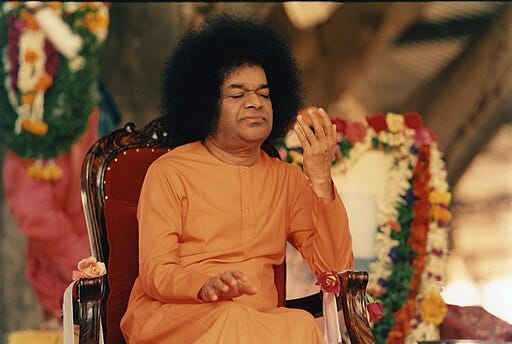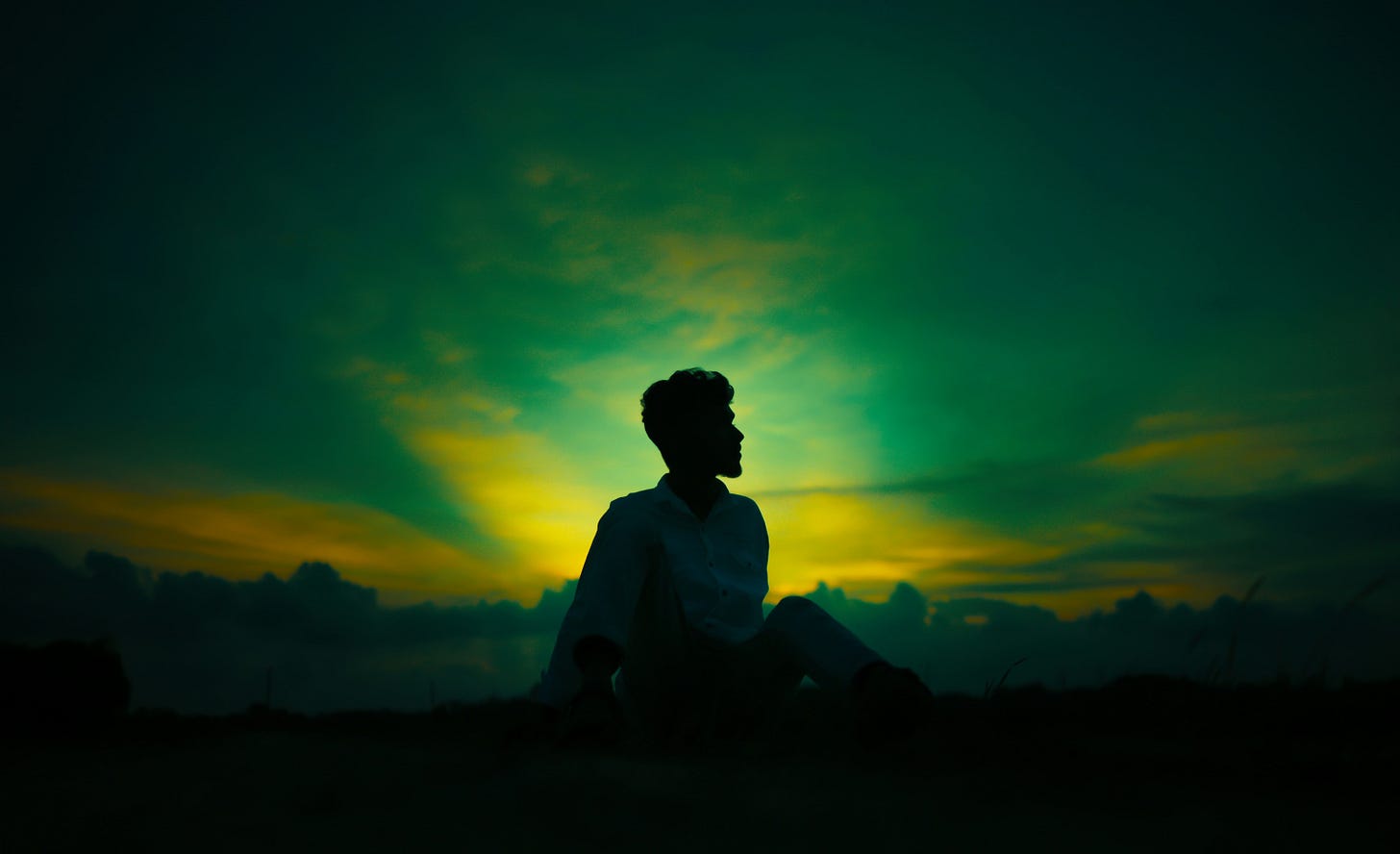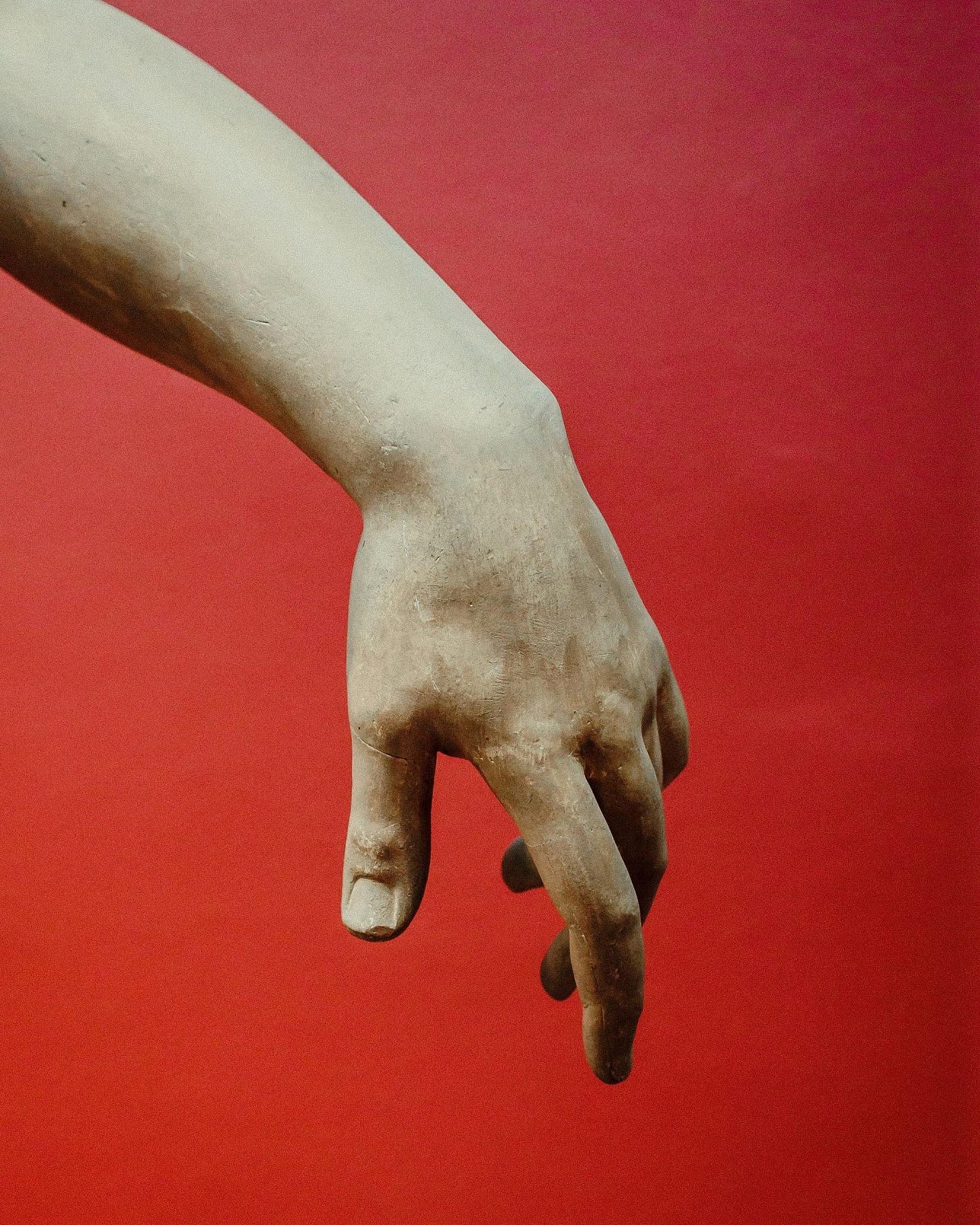This is the first article in a series chronicling my 30-year meditation journey. Read the next one → How two plane crashes led me back to my mind
I didn’t set out to become a “meditation guy.”
But over the past 30 years, I’ve flirted with, immersed myself in, and eventually blended together practices from at least four different schools — each one weird, illuminating, frustrating, and sometimes transformative in its own way.
This is the first installment in a series tracing that journey.
It’s not a how-to. It’s not a ranking. It’s a personal, sometimes messy map of what I learned as I sat (or stood, or visualized floating in space) in the name of inner clarity.
Some methods clicked. Others felt like spiritual cosplay. All of them left a mark.
I’ll start with the very first one I stumbled into as a teenager in Venezuela: a mind-training method with a Cold War–esque name and an almost supernatural promise.
Keys, clocks, and levitating hands: a teenage initiation
When people hear “mind control” today, they usually think of dystopian surveillance states or shady intelligence experiments.
But in the mid-1980s, I encountered something very different: a book called The Silva Mind Control Method by José Silva, a self-taught electronics repairman from Laredo, Texas, who believed the human brain could be trained like a finely tuned signal receiver.
It was the first time I’d ever heard the idea that the mind could be trained. That consciousness had a kind of operating system, and you could learn to hack it.
The book spoke of visualization techniques, mental programming, even remote healing. It felt part science, part magic, and totally unlike anything I’d come across at school.
Suits, briefcases, and teenage wonder
I didn’t stop at the book.
Not long after finishing it, I enrolled in the full Silva Method course. It ran for about two weeks and cost a considerable amount of money for someone my age.
I was definitely the youngest person in the room, by far. But I was hooked. Something about the material lit up my curiosity and made me feel like I was glimpsing a hidden layer of reality.
The setting only added to the sense of being out of place.
Silva appealed mostly to executives and business types. Most people in the room looked like they’d come straight from the office. Suits, briefcases, business hair.
The instructor, with his mustache and wide lenses, had a bit of a corporate-salesman vibe.
And the course itself was held in one of Caracas’s fanciest office buildings, a gleaming mid-'80s tower that seemed worlds away from incense and ashrams.
But that was part of the method’s appeal: it sold itself as practical, results-oriented, no-nonsense mind training.
The practical magic of attention
What amazed me most was how practical it really was.
There was a technique for waking up without an alarm clock just by mentally visualizing your desired wake time before bed.
I practiced it religiously for a while, and it worked.
I don’t use it anymore, but to this day, I still tend to wake up at oddly precise intervals: usually at 4:00 am for water, then again at 6:00 or 7:00, as if some inner clock is still ticking.
There was another exercise for finding lost objects by mentally visualizing where you last saw them. A lifesaver for someone like me, who constantly loses keys or wallets.
Weirdly enough, that one worked like a charm, too.
And then there was the “hand levitation” exercise, meant to demonstrate the mind’s power over the body.
You would sit in a relaxed state, imagine your hand growing lighter and lighter… and before long, it would slowly rise on its own, seemingly without your doing.
That was the first time I felt something physically happen in response to pure mental focus.
I didn’t know it yet, but I’d be vividly reminded of that feeling years later in a hotel room in India, with a book about a guru I wasn’t sure I believed in.
The Indian bookstore and the floating hands
More than a decade later, during a business trip to India for the job I had at the time, I found myself in a small town in India’s Andhra Pradesh state.
I was there to meet with several software companies. Nothing spiritual about it.
But during the trip, I’d been reading The Empire of the Soul by Paul William Roberts, a strange, vivid book that chronicled his travels through India and how he unexpectedly became a devotee of Sathya Sai Baba, a famous Indian spiritual guru known for his wild hair, supposed miracles, and massive following.
The name rang a bell.
Suddenly, I was 12 years old again, standing in the home of a school friend in Caracas.
Her mother, soft-spoken and kind, had portraits of this wild-haired man all over the house.
Sai Baba. I’d never forgotten the image — part disco-era pop star, part holy man — but I hadn’t thought about him in decades.

And now here he was, popping up in this book I happened to bring on a business trip.
That alone felt like a strange bit of synchronicity.
After all, there weren’t exactly hordes of Sai Baba devotees in Caracas back then.
A few days later, I wandered into a cozy, chaotic hotel bookstore.
I was looking for Development as Freedom by Nobel laureate Amartya Sen (I’d studied Economics at university, and I was definitely an Econ geek back then) when I met the woman who ran the place.
Books were stacked from floor to ceiling in true Indian fashion, and she sat behind the counter, almost buried beneath them.
She pointed me toward the right pile. As I pulled the book out, another slim paperback tumbled to the floor. I picked it up… and there he was again: Sai Baba. A short biography.
She noticed my expression and asked, “Do you know who he is?”
I nodded.
“Well,” she said, almost casually, “he’s actually in town today. It’s his birthday.”
I blinked. “Wait… this is his hometown?”
She smiled. “Yes, he was born right here, in Puttaparthi.”
I was floored. I hadn’t known. I’d just flown in for a meeting and happened to wander into a hotel bookstore… on Sai Baba’s birthday… in the town where he was born.
That’s when the synchronicity really hit me — not just once, but stacking:
First, the book I was reading on the trip
Then the memory of my friend’s mom back in Venezuela
And now this chance encounter in his birthplace, on his birthday
I politely declined her offer to see him speak. I’d read plenty of glowing accounts, like Roberts’s.
Still, I’d also come across troubling allegations, the usual cloud that seems to hover around gurus with massive followings. Accusations of abuse, money laundering, even murder.
I was curious, yes. Moved, even. But I was still wary.
I bought the book anyway.
Venezuela, again
That night, back in my hotel room, I began reading it.
A few pages in, I stopped cold — there was a chapter about an incident that had happened, of all places, in Venezuela.
This time, the synchronicity hit like a wave.
The chapter told the story of a flight attendant working for VIASA, the Venezuelan state-owned airline at the time. During a turbulent flight, the plane began losing altitude.
The flight attendant, a Sai Baba devotee, claimed to have seen his face appear in one of the cabin windows. Moments later, the plane regained control.
She believed Baba had saved them. From that point forward, her devotion only deepened.
Now, I’m a fairly rational person. Even as I read the story, my analytical brain was scoffing: “This is probably made up.” But something else happened, too.
I started crying.
I couldn’t stop the tears. A strange, overwhelming peace came over me. A mix of joy, awe, and release.
It didn’t feel like I was reacting to the story itself, but to something behind it. A current that had been humming in the background finally came into focus.
And then something even stranger happened.
Both of my hands began to rise. Slowly. Smoothly. Just like they had during the Silva Method’s hand levitation exercise all those years ago.
I wasn’t moving them. They just floated up, unprompted. As if my body remembered something my mind couldn’t explain.
Make of that what you will.
A resurrection of a different kind
Many years after that night in Puttaparthi, a similar experience found its way back to me, this time on Resurrection Sunday, in the spring of 2024.
I was hiking alone in the mountains when I put on a podcast by Spanish Bishop José Ignacio Munilla, a rather conservative and controversial figure I didn’t usually follow.
I wasn’t expecting much. Perhaps a few liturgical reflections and some symbolic language.
But then he said it outright: that the resurrection of Christ was not a metaphor, but a literal, physical truth.
Something stirred.
At first, it was just a flicker, a kind of quiet admiration for his unapologetic conviction. But then came something else.
A flood of tears. An overwhelming peace. That same inexplicable emotional release I’d felt in that hotel room in India years earlier.
It wasn’t religious in any traditional sense. But something in the air that day opened something deep inside me.
It reminded me of Sai Baba’s book. Of the floating hands. Of the current running deeper than logic.
I shared the full story in this comment under a piece by Robert Stark.
(And if you’ve had one of these moments, you know exactly what I mean.)
What the floating hands taught me
Looking back at that moment in the hotel room — hands rising seemingly of their own accord, tears flowing over a story I wasn’t sure I even believed — I can’t help but think it was never really about Sai Baba, or Silva, or any particular technique.
It was about something much deeper: a kind of remembering.
The body responding to something my conscious mind had forgotten. The unconscious registering a signal long before my intellect could catch up.
And in a way, that’s what meditation has always been for me.
Not a tool to achieve something specific. Not a way to force insight or manipulate reality. But a practice of tuning in to what’s already there. Quietly, persistently, underneath the noise.
Sometimes we meditate to find peace, focus, or clarity. But other times, when we’re lucky, meditation reminds us that those things were there all along.
That we’re not here to manufacture magic, just to make enough space for it to show up.
And sometimes, when we stop trying so hard to control the experience… the experience controls us in the gentlest, most unexpected way.
Next in the series:
In the middle of my most chaotic year on the road, I reached for a book with “catastrophe” in the title. It made more sense than I expected → How two plane crashes led me back to my mind
🧭 What’s one moment—book, teacher, or “coincidence”—that nudged you toward a different path? The kind that didn’t make sense… until it did.
I’d love to hear it.
📌 P.S. – If this piece resonated, feel free to restack or share it with someone walking their own path.
It helps get these ideas to the right eyes—and keeps me writing reflections that blend inner clarity with real-world momentum. 🙏





Thoughtful and unexpectedly uplifting. Loved it!
Alexis, this is a fantastic and deeply captivating piece! Thank you so much for sharing your journey; it's not always easy translating mystical experiences into words, but I so enjoy hearing about other people's insights and paths.
I particularly relate to the phenomenon of crying without knowing exactly why, as if remembering something I can't quite put my finger on. Like you, I don't think it's always related to the incident at hand, but somehow it triggers something deep within. Your description of your hands rising, unprompted, is something I’ve also experienced, but I have never practiced the Silva Method.
I had some similar experiences and synchronicities that unfolded around the time I read Illusions: The Adventures of a Reluctant Messiah. That was a particularly magical season in my life, filled with moments "that didn't make sense until they did".
I'm really looking forward to the rest of this series!